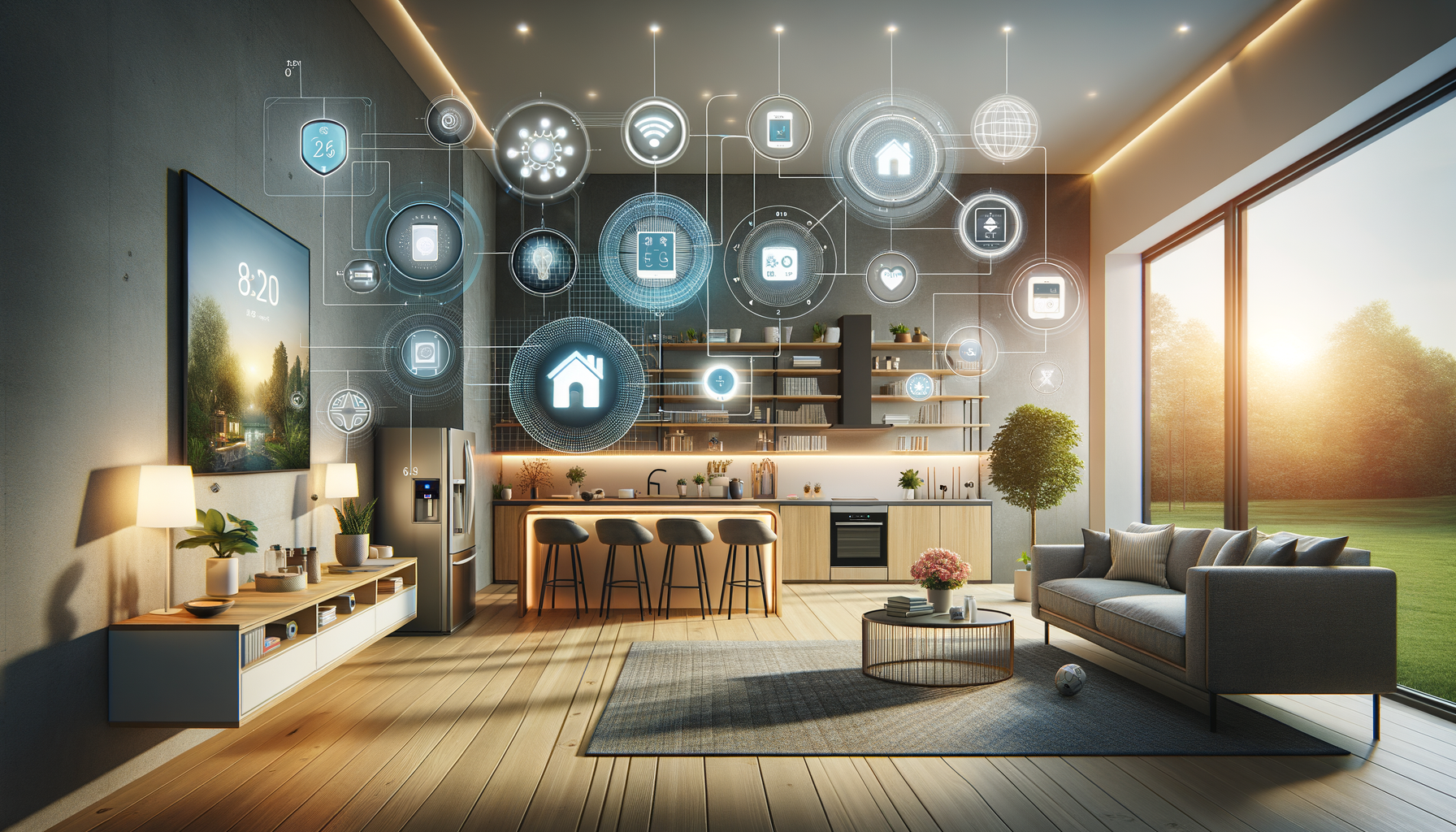Understanding Smart Home Technology
Smart home technology refers to the integration of various devices and systems within a home, allowing them to communicate with each other and be controlled remotely. This technology is primarily designed to enhance convenience, security, and energy efficiency. At the core of smart home systems are connected devices that range from smart thermostats and lighting to advanced security systems and voice-controlled assistants.
The appeal of smart home technology lies in its ability to automate everyday tasks, making life easier and more efficient. For instance, smart thermostats can learn a user’s schedule and adjust the temperature accordingly, resulting in energy savings. Similarly, smart lighting systems can be programmed to turn on and off based on occupancy or time of day, enhancing security and efficiency.
Moreover, smart home technology is highly customizable, allowing homeowners to tailor their systems to fit their specific needs. This personalization can include setting up routines, such as having the lights dim and the thermostat lower when it’s time for bed. The integration of voice assistants further simplifies control, enabling users to manage their homes through simple voice commands.
Energy Efficiency and Cost Savings
One of the most significant benefits of smart home technology is its potential for energy efficiency and cost savings. Smart devices like thermostats, lights, and appliances can significantly reduce energy consumption by optimizing their operation based on user behavior and preferences.
Smart thermostats, for example, can learn a household’s schedule and adjust heating and cooling patterns accordingly. This not only ensures comfort but also prevents unnecessary energy usage when no one is home. In fact, studies have shown that smart thermostats can reduce heating and cooling costs by up to 15%.
Smart lighting systems contribute to energy savings by using LED bulbs and incorporating motion sensors or timers to ensure lights are only on when needed. Additionally, smart plugs and power strips can cut off power to devices that are not in use, reducing phantom loads that can add up over time.
By investing in smart home technology, homeowners can see a noticeable decrease in their utility bills while contributing to a more sustainable environment. The initial investment in smart devices can quickly pay for itself through the savings on energy costs.
Enhancing Home Security
Smart home technology plays a crucial role in enhancing home security, offering peace of mind to homeowners. With advancements in security systems, smart cameras, doorbells, and locks, homeowners can monitor and control access to their homes from anywhere in the world.
Smart security cameras provide real-time video feeds that can be accessed through smartphones or computers. They often come with motion detection and night vision capabilities, alerting homeowners to any unusual activity. Similarly, smart doorbells with integrated cameras allow users to see and communicate with visitors, even when they are not at home.
Smart locks add another layer of security by allowing homeowners to lock and unlock doors remotely. They can also provide temporary access codes to guests or service providers, eliminating the need for spare keys. Some smart locks even offer biometric access, ensuring that only authorized individuals can enter the home.
These security features not only deter potential intruders but also provide valuable data that can be used in the event of a security breach. The ability to monitor one’s home remotely allows for a quick response to any security threats, enhancing overall safety.
Convenience and Lifestyle Integration
Smart home technology is designed to integrate seamlessly into everyday life, enhancing convenience and improving quality of living. Voice-controlled assistants, such as smart speakers, act as central hubs for controlling various devices, from lighting and thermostats to entertainment systems.
With voice commands, users can easily adjust settings, play music, or get weather updates without lifting a finger. This hands-free control is particularly beneficial for individuals with mobility challenges, allowing them to manage their environment with ease.
Smart home technology also supports lifestyle integration through automation. Homeowners can set up routines that align with their daily schedules, such as having the coffee maker start brewing as soon as the morning alarm goes off. This level of automation not only saves time but also enhances the overall living experience.
Additionally, smart home systems can be expanded and upgraded as needed, allowing homeowners to continually improve their setups. This adaptability ensures that smart home technology remains relevant and useful as new devices and features become available.
Challenges and Considerations
While smart home technology offers numerous benefits, there are challenges and considerations that homeowners must address. One of the primary concerns is privacy and data security. As smart devices collect and transmit data, it is crucial to ensure that this information is protected from unauthorized access.
Homeowners should be aware of the security features of their devices and take steps to secure their networks, such as using strong passwords and enabling two-factor authentication. Regular updates to device firmware can also help protect against vulnerabilities.
Another challenge is the compatibility between different devices and platforms. With a wide range of manufacturers and products, ensuring that all devices work seamlessly together can be difficult. Homeowners may need to invest in central hubs or use platforms that support multiple devices to achieve full integration.
Finally, the initial cost of smart home technology can be a barrier for some. While the long-term savings on energy bills can offset these costs, the upfront investment may be significant. Homeowners should carefully consider their needs and budget before investing in smart home systems.
Despite these challenges, the advantages of smart home technology often outweigh the drawbacks, making it a worthwhile consideration for those looking to enhance their living spaces.



Leave a Reply